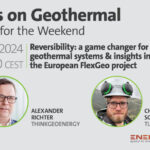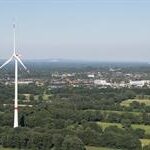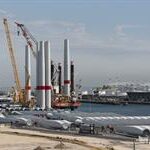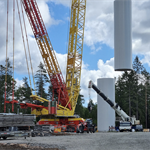‘Wind will be the backbone of future energy systems’, WindEurope CEO
Energy Disrupter
WindEurope’s action plan calls for simplified permitting procedures for wind power development. But can a one-size-fits-all approach work across the continent?
Of course, national differences have to be taken into account. Factors vary from country to country. But this doesn’t mean there are no similarities — species protection, for example. Best practices for the assessment of wind energy’s impact on birds should be shared among member states. Building up sound monitoring on the development of bird populations can help in making more informed permitting decisions. Staffing is another issue tcommon to many EU countries. Permitting authorities often lack sufficient resources and personnel to make faster decisions. That needs to change
Europe is keeping 20-plus year-old turbines in operation when they could be replaced by a third of the number generating at least twice as much power. Why?
Repowering is the preferred option for 20-plus turbines. We want to replace them with new, more efficient machines wherever possible. Europe will not be able to achieve its renewable energy targets without a solid repowering strategy.
But the situation is more complex than that. Repowering projects need new permits as well. New turbines are bigger than old ones. Hub heights and tip heights have implications on setback rules, environmental impact assessments and other factors that influence permitting.
Regional area planning can be another issue. Existing sites might no longer be designated areas for wind energy in today’s regional area plans. For these sites, repowering is not an option, so developers are looking at lifetime extension.
Repowering examples

Europe needs a radical overhaul of its power networks to feed more renewables into the systems. Where are we up to on that?
Europe wants to be climate neutral by 2050. This requires large-scale electrification of the energy system coupled with the deployment of renewables. Electricity demand is expected to increase two- to three-fold by 2050. The European Commission expects the rate of electrification to grow to 50% from today’s 24%. But grid expansion is progressing too slowly.
The optimisation of the existing grid infrastructure is an important quick win. Member states should make use of the multiple technologies to optimise existing infrastructure. Grids must — more than ever — be utilised to their maximum potential. The technologies are proven and available. WindEurope recently released a position paper on grid optimisation that details the necessary steps.
Are onshore wind’s permitting problems driving developers offshore? Is it becoming easier, quicker and cheaper to go offshore?
The cost reductions in offshore wind over the past decade are remarkable. Offshore wind has proven to be a reliable source of renewable electricity with very little fluctuation over the year. As turbines grow in size, capacity factors continue to increase to levels that would have been unthinkable at the beginning of the century.
Floating wind and hybrid offshore wind projects will further increase the potential for offshore wind development and system integration. More and more countries are starting to develop offshore wind. The European Commission is currently drafting the EU Offshore Renewable Energy Strategy. This strategy will give another push for offshore wind development and set the scene for the next decade of installations.
But do not be mistaken – onshore will provide the majority of wind installations in Europe across all scenarios. By 2050 the EU wants to have 450GW of offshore wind compared to at least 750GW of onshore wind. The technological leaps in onshore wind are remarkable. It is the cheapest form of new electricity production in many European countries.
WindEurope recently highlighted a skills shortage – how can we combat that?
Workers with the required technical skill set are rare and many different industries are competing for these talents. But the wind industry has a good story to tell. Wind will be the backbone of Europe’s future energy systems. The EU and the member states are committed to building up a carbon-free economy that runs on wind energy and other renewables. Wind will enter other sectors like mobility, industry and heating. We need the brightest minds to overcome existing technological challenges. The medium- and long-term employment perspectives in the wind industry are promising.
In the short term, we need to focus on retaining the existing, well-trained workforce. The COVID-19 pandemic is not over yet and its implications on the sector are yet to be seen. So far wind was very resilient. Installations remained on a high level and financing for new projects even reached a new all-time high in the first half of 2020. But this is not a given. We must avoid redundancies and do all we can to keep our talented workers on board.
















